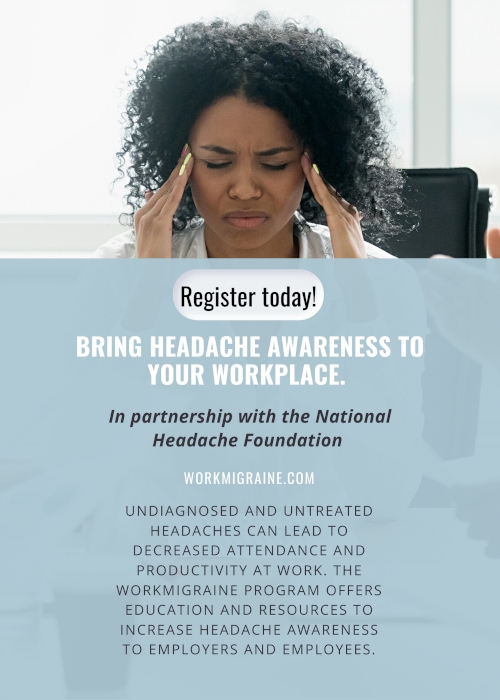Promoting a Safe & Healthy Workplace
Friday, February 21st, 2020
“Almost 3 million workers die each year from occupational accidents and work related diseases. This is an unacceptable and avoidable human cost. We can and must reduce and eliminate such deaths, injuries and diseases from work.”
International Labour Organization Director-General, Guy Ryder
The quote above is extremely sobering. When we realize that the vast majority of these illnesses and deaths are due to mere human error, we understand how important greater education and prevention truly are. We cannot afford so many lives lost or affected by our carelessness or neglect.
At IAB, we are doing our part to spread health education in the workplace. We connect healthcare providers with employer groups to help bring wellness to the workplace. This April 28th, we observe World Day for Safety and Health in the Workplace. Each year the International Labour Organization focuses on a specific theme for this day. Below we will go over some practical ways to promote health and safety in your workplace.
Healthy Habits in the Workplace

- Handwashing
- Handwashing is always the single most effective and simplest way to prevent the spread of disease. You should always wash hands after using the restroom. Wash hands at the start of your shift, after removing any protective gloves, between patients, before food prep, etc. Be mindful of the type of work you’re in and fill in appropriate times when diseases could potentially be spread. Never underestimate the importance and effectiveness of handwashing. Keeping a generally clean and sanitary work environment also prevents the spread of disease.
- Ventilation
- Proper air ventilation can also help prevent the spread of disease. The building humidity should be kept at 60 percent or less to inhibit the growth of any mold or fungus. Ensure that the building’s ventilation system is maintained properly. Circulation of fresh air keeps bacteria from growing and provides healthy air to breathe.
- Vaccinations
- Keep up to date on all the recommended vaccinations. Providing on-site vaccinations that pertain to your line of work is an extra measure that is well worth the effort. Tetanus and Flu shots are beneficial to everyone. Certain hepatitis vaccinations should be emphasized to protect those working with children, in healthcare or waste collection. Consult your doctor for the best vaccine recommendations for your workplace.
- Protective gear
- If you can potentially come into contact with any type of hazardous material at work, the proper protective covering can be life-saving. Eyes and mouths are vulnerable areas that can easily contract an illness. Keep them covered with masks, face shields, respirators, and safety glasses. Use gowns and gloves to cover clothing and hands which can carry infectious material. Without these coverings, diseases can be spread from person to person or from hand to face.
Safety in the Workplace

Safety policies and procedures are extremely important. But they are only useful if they are actually practiced. Review policies frequently and make sure all employees are familiar with them. Making safety a priority has to become a habit and habits take time to develop. When you create a work environment that promotes safe practices, it has to start with the employer to trickle down to the employees. Create a culture of safety and new employees will naturally be grafted in.
Other things to keep in mind when promoting a safe work environment:
- Always wear protective safety gear where appropriate.
- Understand that safety is non-negotiable.
- Take extra care to hire employees with integrity who will put safety first and not cut corners.
- Make plans and practice procedures for emergency situations.
- Provide proper training and multiple opportunities for practice.
ILO 2020 Theme: Violence and Harassment in the World of Work

Violence and harassment are unfortunate realities in the workplace. Where there are large groups of people, there will always be a risk for some occurrence of inappropriate or dangerous behavior. Here are some practical ways we can help decrease their occurrence or at least head them off before any real danger occurs.
- Employers –
- Be sure to check on the morale of your employees. You can’t monitor everyone all the time, but if you’re an easy person to approach, employees are more likely to come to you when there is a problem.
- Hire people for their skill level but also for their character.
- Offer training and materials on what to do if you experience or witness bullying or harassment at work.
- Have a harassment policy and review it often.
- Employees –
- Speak up. If you feel as though you or a coworker may be in danger, tell someone about it. Don’t try to handle it on your own. Making a big deal out of nothing is better than waiting until it’s too late.A Forbes article on Workplace safety gave this real-life example:
A woman overheard a colleague talking fearfully to her boyfriend while on a break outside the building; the woman was pleading with her boyfriend not to show up at her office. The colleague reported this to Human Resources and they called the police who showed up mere minutes before the boyfriend appeared; he was armed. By speaking up, the colleague had saved the day.
- Know your rights. If you’re being harassed or discriminated against report it.
- Keep notes on occurrences of harassment with as many details as possible.
- Call the police. If you’ve become a victim of a criminal act, do not hesitate to contact authorities.
- Speak up. If you feel as though you or a coworker may be in danger, tell someone about it. Don’t try to handle it on your own. Making a big deal out of nothing is better than waiting until it’s too late.A Forbes article on Workplace safety gave this real-life example:
Together we can make our workplace a safer and healthier place to be. Training and prevention are absolutely essential for our success in diminishing the number of casualties each year. Visit our National Wellness Observance Calendar for more resources on World Day for Safety and Health at Work.


